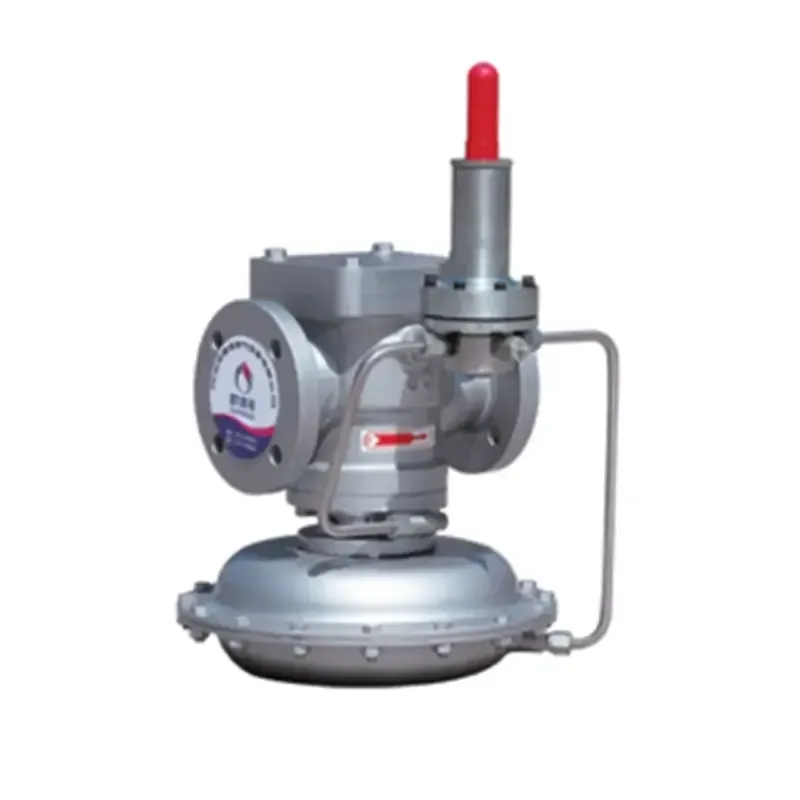
Oct . 11, 2024 11:05
Back to list
Understanding the Functionality of Gas Pressure Regulator Valves in Various Applications
Understanding Gas Pressure Regulator Valves Essential Components in Gas Distribution
Gas pressure regulator valves play a crucial role in the safe and efficient distribution of gas for various applications, from domestic heating systems to industrial processes. These valves ensure that the gas supplied to appliances is at a correct and consistent pressure, thus preventing damage to equipment and ensuring optimal performance. In this article, we will explore the function, types, and significance of gas pressure regulator valves in our daily lives and industries.
What is a Gas Pressure Regulator Valve?
A gas pressure regulator valve is a mechanical device designed to control the pressure of gas flowing from a source, such as a tank or pipeline, to a downstream process or appliance. It reduces high inlet pressure to a desired lower outlet pressure, allowing for the safe and efficient usage of gas. The regulator works automatically by adjusting the flow based on the output pressure, maintaining it within a specific range as demand varies.
How Does it Work?
The functioning of a gas pressure regulator valve can be understood in a few simple steps. When gas enters the regulator from the source, it typically comes at a high pressure that can be dangerous for appliances designed to operate at lower pressures. The gas pressure regulator contains a diaphragm that senses the outlet pressure. When the outlet pressure exceeds the set point, the regulator reduces the flow of gas by closing a valve, thus dropping the pressure back to the desired level. Conversely, if the pressure drops below the set point, the regulator opens to allow more gas to flow in, thus stabilizing the pressure.
Types of Gas Pressure Regulators
There are various types of gas pressure regulators, each designed for specific applications and gas types
. The most common types include1. Single-Stage Regulators These regulators reduce the pressure in one step. They are typically used for applications with a steady and consistent gas demand.
gas pressure regulator valve

2. Two-Stage Regulators These are more complex and provide a more stable output pressure by having two stages of pressure reduction. They are ideal for applications where there are fluctuations in gas demand.
3. Back Pressure Regulators These maintain a specific pressure upstream in a system, allowing for precise control of gas flow.
4. Automatic and Manual Regulators Automatic regulators adjust pressure without human intervention, whereas manual regulators require user adjustments to set and maintain pressure levels.
Applications of Gas Pressure Regulators
Gas pressure regulators have diverse applications across various sectors. In residential settings, they are commonly found in natural gas appliances like stoves, water heaters, and boilers, ensuring a safe and efficient fuel supply. In industrial settings, these regulators are vital for processes that require specific gas pressures, such as in chemical manufacturing, food processing, and power generation. Additionally, they are used in the medical field for oxygen supply systems, ensuring that patients receive the right amount of oxygen under controlled conditions.
Importance of Proper Installation and Maintenance
To ensure the safety and reliability of gas pressure regulator valves, proper installation and regular maintenance are essential. Incorrect installation can lead to gas leaks, pressure fluctuations, or even catastrophic failures. Routine checks and maintenance help identify wear and tear, ensuring that the regulator operates efficiently throughout its lifespan. Users should also be aware of local regulations and guidelines governing the installation and maintenance of gas pressure regulators to ensure compliance and safety.
Conclusion
Gas pressure regulator valves are integral components of gas distribution systems, providing safe and efficient control of gas pressure across various applications. Understanding their operation, types, and applications is vital for safe and efficient usage, whether in residential or industrial settings. As technology advances, the design and functionality of these regulators continue to evolve, enhancing safety and efficiency in gas distribution and consumption. By prioritizing correct installation and maintenance practices, users can ensure the long-term reliability of these crucial devices.
Next:
Latest news
-
Safety Valve Spring-Loaded Design Overpressure ProtectionNewsJul.25,2025
-
Precision Voltage Regulator AC5 Accuracy Grade PerformanceNewsJul.25,2025
-
Natural Gas Pressure Regulating Skid Industrial Pipeline ApplicationsNewsJul.25,2025
-
Natural Gas Filter Stainless Steel Mesh Element DesignNewsJul.25,2025
-
Gas Pressure Regulator Valve Direct-Acting Spring-Loaded DesignNewsJul.25,2025
-
Decompression Equipment Multi-Stage Heat Exchange System DesignNewsJul.25,2025

